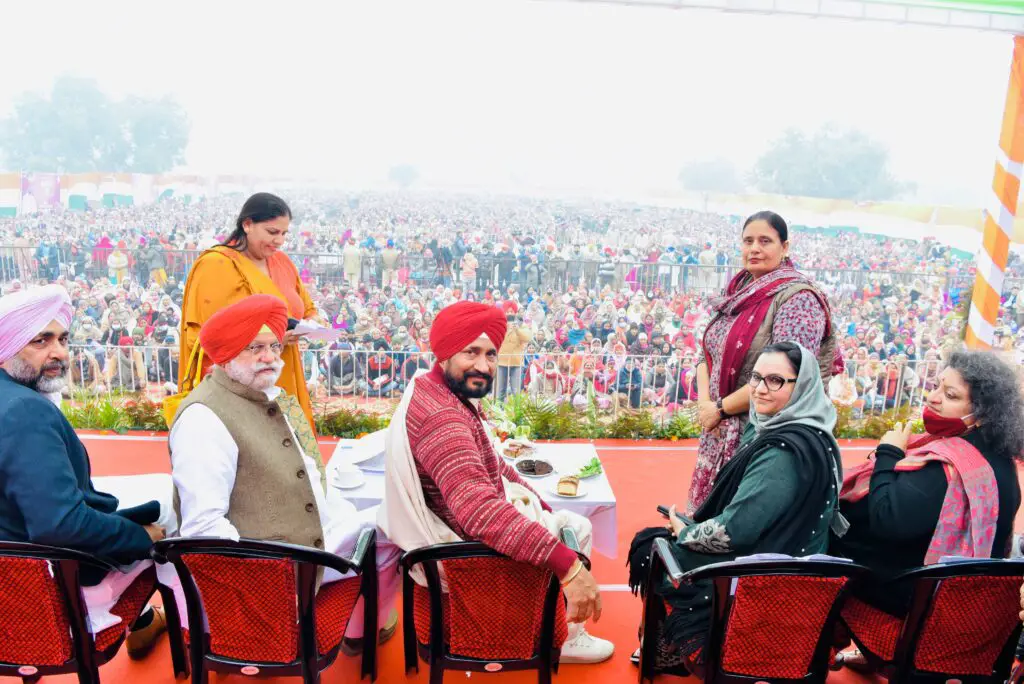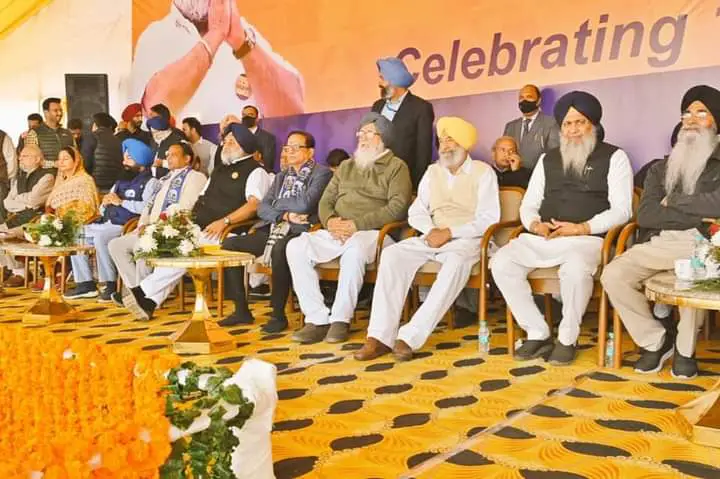The upcoming Punjab elections have pushed the Malwa region, which houses 69 of the total 117 seats of the state’s legislative assembly, into the spotlight. This region often hailed as the kingmaker in the state’s elections is likely to see tough contestation, especially between the incumbent Indian National Congress (INC) and the relatively new political player in Punjab – Aam Aadmi Party (AAP). Alongside this, Dalit identity politics and agricultural issues are also likely to be at the forefront of the competition.
The Election Commission of India has announced that the 2022 Punjab Legislative Assembly elections will be held on 14 February. The democratic exercise is slated to be a four-way face-off between the INC, the AAP, the Shiromani Akai Dal-Bahujan Samaj Party alliance (SAD-BSP), and the Bharatiya Janata Party (BJP).
Malwa’s situation and electoral importance
The Malwa region comprises 11 districts: Anandpur Sahib, Bathinda, Faridkot, Fatehgarh Sahib, Ferozepur, Ludhiana, Mansa, Moga Muktsar, Patiala, and Sangrur. Called the cotton belt of Punjab, Malwa is the state’s biggest geographical region. It holds immense political importance as it holds more than 50 per cent of the seats (69) of the state’s Legislative Assembly. This means that the region can make or break a government.
This belt used to be a traditional stronghold of SAD. The party had won 34 out of 56 seats from this region alone in the 2012 Assembly election. However, in the 2014 General elections, AAP had taken the lead with 31 out of the 69 Malwa seats. In the 2017 Assembly elections, Congress took 40 seats, while AAP came in second with 18 seats. The then SAD-BJP alliance could only get nine seats despite the second-highest voter share. In the 2019 elections, INC retained the top spot while AAP was pushed to the third position by the SAD-BJP alliance. Despite this, experts opine that AAP had built a stronghold in Punjab based on its success in Malwa from 2014 onwards.
The Dalit voters in Punjab
Dalit voters in Punjab are important for all mainstream parties simply by virtue of their large numbers as close to one-third – 32% – of the state’s people are Dalits, as per the 2011 Census. Of this Dalit population, about one-third comprise Mazhabi Sikhs, who are involved in the agricultural economy in the Malwa and Majha area.
Valmikis, who comprise 10-12% of the total Dalit population, form this group’s majority in urban areas. A collection of Dalit groups lives in Punjab’s Doaba region. They are traditionally artisans and constitute 40% of the total Dalit population in Punjab. Several castes like the Ad Dharmis, the Chamars, the Ramdasias, the Ramdasia Sikhs, the Ravidasias, and Ravidasia Sikhs are a part of this demographic.

Over the years, members of these communities have seen relative upliftment compared to their counterparts in Malwa and Majha areas, mainly due to overseas migration and access to education.
Former Punjab cadre IAS officer SR Ladhar, who belongs to the Dalit community, told the media that there was no political consolidation even though SCs in Punjab constitute about one-third of the total population.
Where do the parties stand now?
In Malwa, experts believe that the SAD lost popularity due to corruption, high-handedness, etc. While the AAP pulled votes from both the INC and the SAD-BJP alliance, it also lost votes in 2017 from the Hindu voter bank because they seemed associated with radical Sikh elements. The Hindus comprise 34% of the population in the Malwa region. To their advantage, AAP’s prominent leader in Punjab, Bhagwant Mann, is a popular leader from Sangrur in Malwa. The INC, for its part, is looking to leverage controversial singer and recruit Sidhu Moosewala’s popularity to connect with the youth in the Malwa region. However, the party’s poor response to the massive crop damage to the cotton crops across Malwa due to the pink bollworm epidemic, including the lack of any compensation to the ailing farmers, might affect Congress negatively here.
Compared to AAP, the other parties seem to have a headstart in attracting the Dalit vote. In June last year, the SAD, a Jat-dominated party that broke its alliance with the BJP over the farm law protests, stepped into a coalition with the BSP – a party formed to represent Dalits and other marginalised communities for the assembly polls. SAD president Sukhbir Singh Badal had already declared that the party would make a Dalit the deputy chief minister if elected. Following this, the Congress government in Punjab took two important decisions targeted towards appeasing the Scheduled Castes (SCs) members in the state. It regularised the services of nearly 4,000 safai karamcharis and other sanitation workers and cleared some of the pending SC post-matric scholarship dues of private educational institutions for the 2017-20 period. In September last year, after Captain Amarinder Singh resigned from his post as the Chief Minister of Punjab, INC appointed a Dalit-Sikh leader Charanjit Singh Channi to the post. He is the state’s first Dalit-Sikh CM.
However, there are a lot of internal discords within the parties themselves.
AAP cadre of the Jalandhar unit displayed their budding discontent on Friday. They showed the party’s Punjab affairs co-in-charge Raghav Chadha black flags over ticket allocation for the upcoming Punjab assembly polls. The protestors consisted of supporters of former AAP district chief Shiv Dyal Mali and aides of Dr. Sanjeev Sharma. The former was denied a ticket from Jalandhar West in favour of former BJP leader Sheetal Aungral, who had joined the AAP a few days ago. In contrast, the latter, who lost the 2017 polls from Jalandhar Central in 2017, was denied a ticket for Raman Arora.

The AAP might be put at a disadvantage as it is yet to reveal its Chief Ministerial candidate. The party’s national convenor Arvind Kejriwal has repeatedly said that the party will announce its CM face, a Sikh, ahead of the elections. Although the name hasn’t been made public, speculation is rife about Bhagwant Mann’s candidature.
On the other hand, there are visible tensions within the INC. Navjot Singh Sidhu, the cricketer-turned-politician has often raised questions about decisions taken by the Channi government. Sidhu’s strong opposition to APS Deol’s appointment by the Channi government as the state’s advocate general seems to have eventually led to his resignation. Sidhu has also questioned the appointment of the state’s Director General of Police and has sought action against drug mafia and justice in sacrilege cases quite vocally. Although he recently commented that he and Channi are like two bodies with the same soul, the discord seems to be already registered.
The BJP, which has already incurred the wrath of farmers in the Malwa region due to the controversial farm laws and its handling of the protests against the same, seems to be much behind in the race. It is trying to switch gears with the recent alliance with former CM Capt. Amarinder Singh’s party Punjab Lok Congress and former Akali Dal leader Sukhdev Singh Dhindsa’s new outfit, Shiromani Akali Dal (Sanyukt). There could be some internal friction relating to seat-sharing arrangements. However, it is too early to say.

